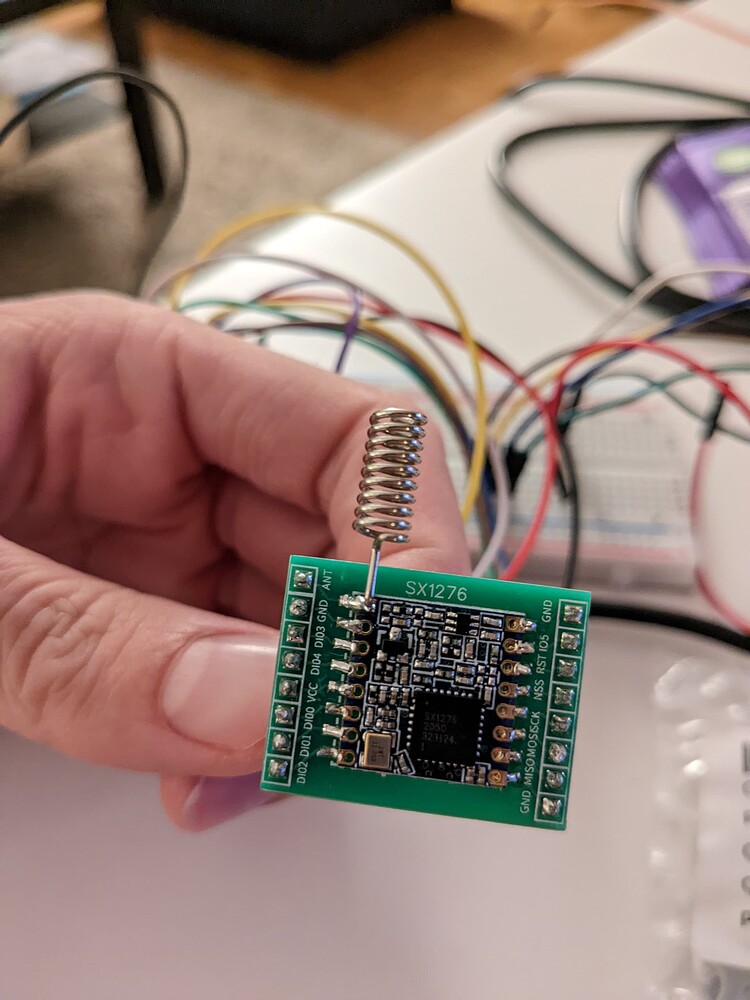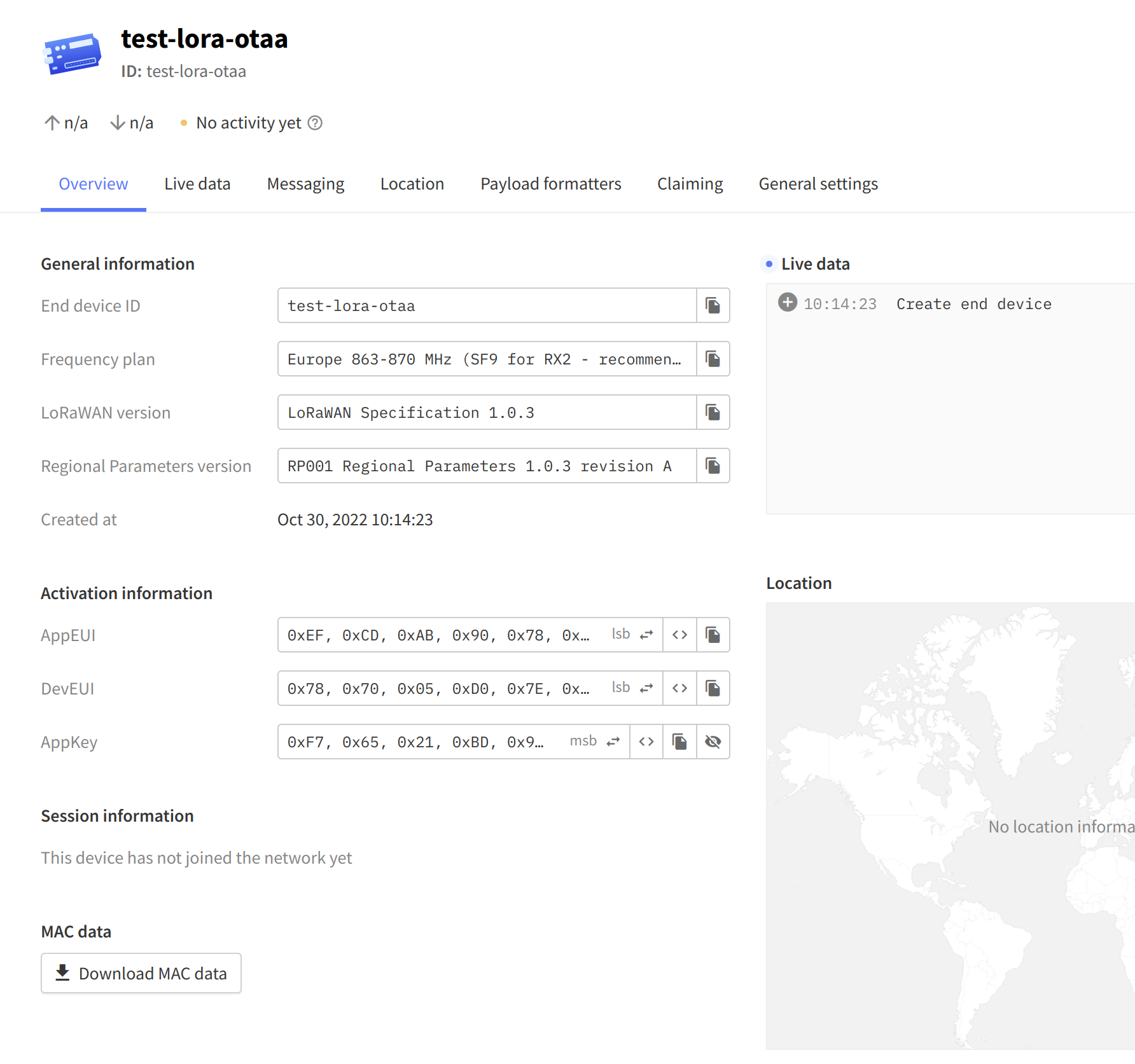Hi everyone,
Since I could not find any working solution on the forum, I am sharing my problem with you.
I am trying to send “Hello world” with the SX1276 module and an Arduino Pro Mini (3.3V 8MHz) to TTN with the ttn-abp example provided by the MCCI LoRaWAN LMIC Library (Version 4.1.1). I am sure that my SX1276 is working correctly, since I have a second board, and communication could be succesfully established when sending messages between the two SX1276 (>100meters).
I am in Europe using 868MHz config, and in a big city with gateways very close (<500m). I dont have my own gateway.
I created an end-device on TTN for abp with:
- Europe 863-870 MHz (SF9 for RX2 - recommended)
- LoRaWAN Specification 1.0.3
- RP001 Regional Parameters 1.0.3 revision A
I followed ttn-abp and replaced FILLMEIN by NWKSKEY and APPSKEY with big-endian format (msb) and DEVADDR in big endian too
static const u4_t DEVADDR = 0x260BF156 ; // ← Change this address for every node!
I am using default wiring setup:
// Pin mapping
// Adapted for Feather M0 per p.10 of [feather]
const lmic_pinmap lmic_pins = {
.nss = 8, // chip select on feather (rf95module) CS
.rxtx = LMIC_UNUSED_PIN,
.rst = 4, // reset pin
.dio = {6, 5, LMIC_UNUSED_PIN}, // assumes external jumpers [feather_lora_jumper]
// DIO1 is on JP1-1: is io1 - we connect to GPO6
// DIO1 is on JP5-3: is D2 - we connect to GPO5
};
So I connected RST to Pin 4, DI00 to Pin 6 and DI01 to PIn 5.
I also uncommented
#define CFG_eu868 1
#define CFG_sx1276_radio 1
in MCCI_LoRaWAN_LMIC_library/project_config/lmic_project_config.h
I use an external 3.3V supply for my SX1276 to make sure to have sufficient current/power.
Unfortunately, here is what appears in my Arduino monitor:
20:21:21.618 → 130186000: EV_TXSTART
20:21:21.618 → Packet queued
20:21:23.742 → 130316816: EV_TXCOMPLETE (includes waiting for RX windows)
20:21:33.746 → 130942812: EV_TXSTART
20:21:33.746 → Packet queued
20:21:35.866 → 131073625: EV_TXCOMPLETE (includes waiting for RX windows)
20:21:45.871 → 131699618: EV_TXSTART
20:21:45.904 → Packet queued
20:21:47.991 → 131830596: EV_TXCOMPLETE (includes waiting for RX windows)
20:21:58.026 → 132456591: EV_TXSTART
20:21:58.026 → Packet queued
20:22:00.113 → 132587405: EV_TXCOMPLETE (includes waiting for RX windows)
No obvious errors but no ACK message or "Received ?? bytes of payload.
Same in TTN, no live data transmitted.
Am I doing something wrong?
I would greatly appreciate your help please !

